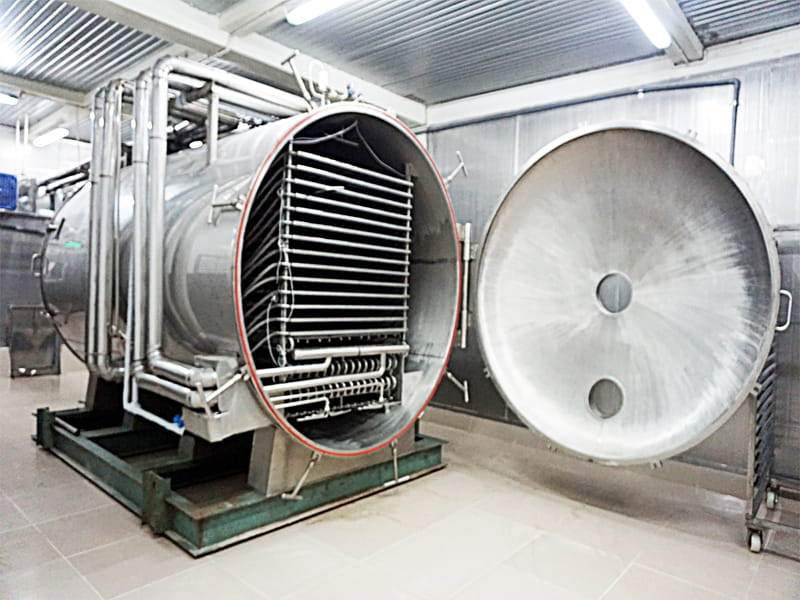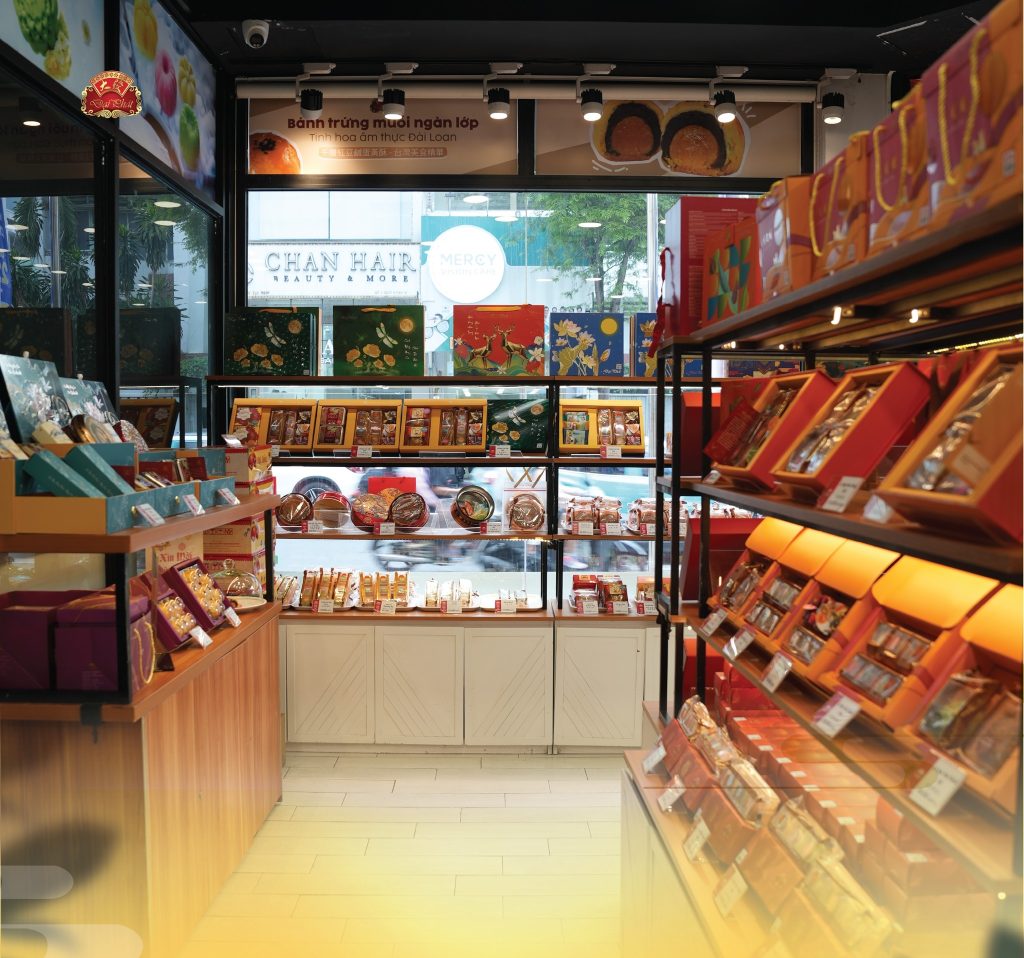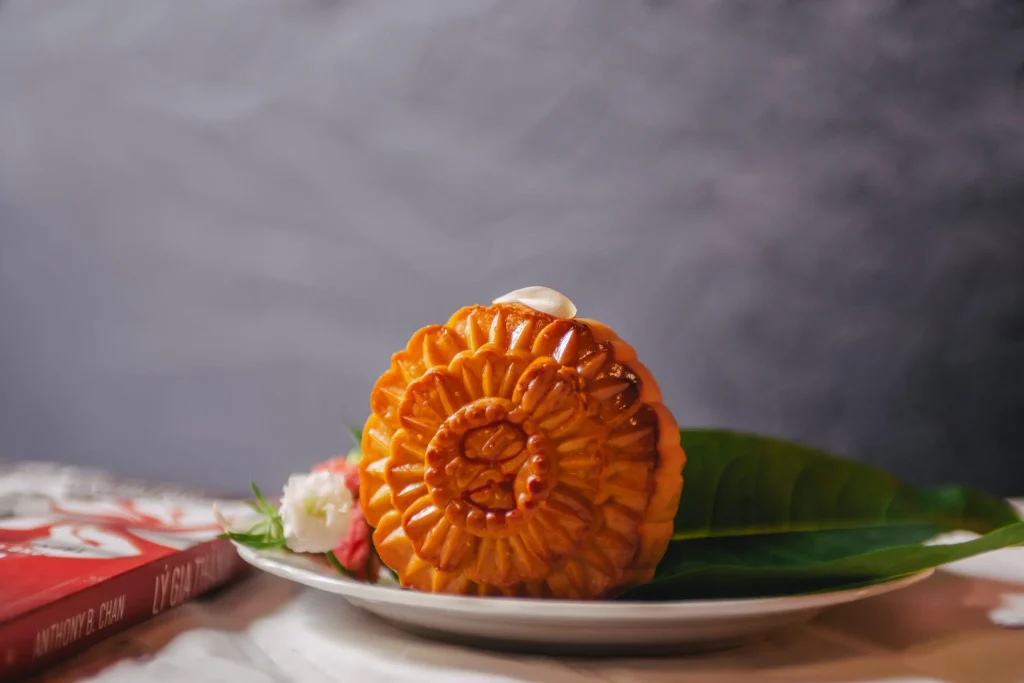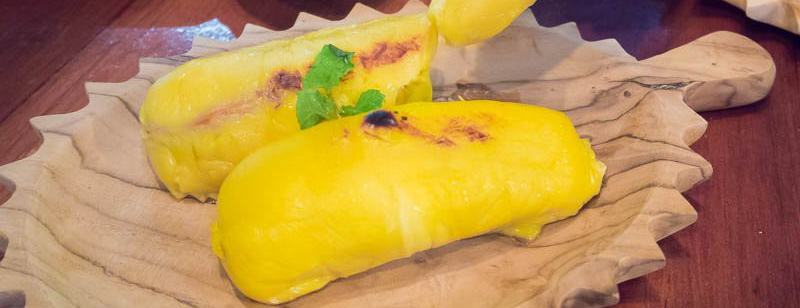Danh Mục
1. Introduction to Freeze-Drying
**Freeze-drying**, also known as lyophilization, is a modern drying method that removes moisture from products by freezing them and then using a vacuum to turn the water from solid to vapor without passing through the liquid phase. This technology is widely applied in many industries, especially food and pharmaceuticals, due to its ability to preserve the nutrients, colors, and shapes of products after drying.
In enterprises, the freeze-drying process helps preserve products better and enhances the value of products by maintaining high quality after drying.

2. The Practical Freeze-Drying Process in Enterprises
A standard freeze-drying process in a manufacturing enterprise typically includes the following key steps:
-
Product Preparation
Before entering the freeze-drying process, the product must be thoroughly prepared. This includes:
- Selecting and sorting products: Ensuring that only the highest quality products are selected for freeze-drying.
- Cleaning and cutting (if needed): For products like fruits, vegetables, or pharmaceuticals, the product must be washed and cut into appropriate sizes to ensure even drying.
- Quick freezing: The product will be frozen at very low temperatures (around -50°C to -80°C). This step helps preserve the structure and nutrients of the product, avoiding spoilage before drying.
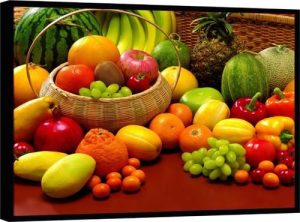
-
The Freeze-Drying Process
This is the most crucial phase in the process, consisting of two main stages:
- Sublimation stage: After freezing, the product is placed in the freeze-drying chamber. Here, temperature and vacuum pressure are adjusted to convert the water in the product from a solid (ice) directly into vapor without passing through the liquid state. This process removes all water from the product while retaining its nutrients and flavors.
- Desorption stage: After sublimation, the product still contains a small amount of moisture. In this stage, dry air is pumped in to remove any remaining moisture, ensuring the product is completely dry.
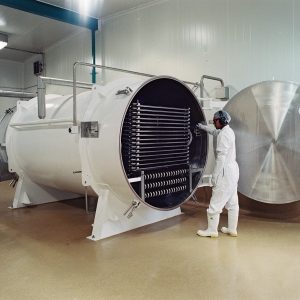
-
Product Quality Inspection
Once the freeze-drying process is completed, the product undergoes a quality check to ensure:
- Moisture content: The product must meet the standard dryness level, with a remaining water content of less than 2-5%.
- Nutritional and color preservation: The nutrients, color, and flavor of the product must be preserved compared to the original.
- Texture and weight: The freeze-dried product should maintain its natural texture while being significantly lighter than the original product.

-
Final Product Packaging
Once the product meets quality standards, it is immediately packaged to prevent moisture absorption from the air. The packaging process includes:
- Vacuum sealing: The product is vacuum-sealed to prevent contact with air, maintaining its dryness and allowing for long-term storage.
- Labeling and final inspection: The product is labeled with full information about its ingredients, production date, and expiration date. Finally, the product undergoes a last quality check before being released to the market.
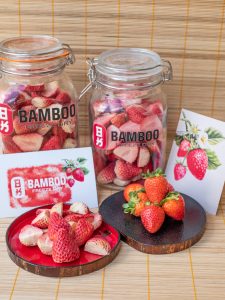
3. Examples of the Freeze-Drying Process in Large Companies
A prime example of a practical freeze-drying process in business is Vinamit – one of the leading food companies in Vietnam. Vinamit has applied freeze-drying technology to produce dried fruits such as jackfruit, mango, banana, and various types of nuts. The freeze-drying process at Vinamit helps the product retain its natural color, crispy texture, and distinctive flavor without the need for preservatives.

In the pharmaceutical sector, Kemin Industries has adopted freeze-drying technology to preserve biologically active ingredients. Freeze-drying helps protect sensitive components, maintaining the effectiveness of drugs and extending their shelf life.

4. The Benefits of Freeze-Drying for Enterprises
- Increased product value: Freeze-drying technology not only preserves the quality of the product but also creates products with higher value compared to other drying methods.
- Long-term preservation: Freeze-dried products can be stored for long periods without the need for preservatives, reducing costs and improving safety for consumers.
- Product diversification: Freeze-drying can be applied to a wide range of products, from food and pharmaceuticals to cosmetics, expanding the production scope of businesses.
5. Conclusion
The freeze-drying process in enterprises is a modern technological advancement that helps preserve the quality and value of products. With its superior advantages over traditional drying methods, freeze-drying has been adopted by many large and small enterprises, from food to pharmaceuticals, to deliver the highest quality products to consumers. Investing in this technology not only enhances the brand but also optimizes long-term profitability for businesses.
